It is one of those days. They happen. New and seasoned teachers alike have them. What got into those kids you wonder.
The room is back in order. Everything is ready for tomorrow. All that is left is to check your email before leaving. As you enter your password, you make a mental note to stop on the way home for a caramel sundae. After all, you deserve it after a day like today. Mouth watering, you quickly skim the list for anything that looks more pressing than the treat you just promised yourself.
And then you see it.
The little red symbol indicating a message from Principal Crabtree. Her reputation preceded her and by all accounts her name fits her perfectly. Something tells you the content of the email would not be thanking you for taking extra bus duty yesterday.
Instead you are informed that you will have an observation on Friday.
You groan, grab your keys, and decide to forgo the small caramel sundae you were dreaming about and get the jumbo size instead. Throwing caution to the wind, you also order a caramel cappuccino with an extra shot of espresso.
On the drive home, your brain is fueled by creamy, sugary, deliciousness and caffeine. You decide to do a really cool STEM challenge to impress Mrs. Crabtree. The kids will love it and be engaged. They will work in hands-on collaborative groups. You will guide, but not direct. You will ask open-ended questions. The solutions will be student generated.
Pulling into your driveway you are ecstatic about your plan. You begin gathering materials in your mind for the lesson. And then you freeze. Maybe this is too open-ended. What if the kids get really rowdy or don’t interact with the materials correctly? What if they are rude and throw things? Anything is possible after how they behaved today.
You probably should do something more conservative (and quiet), right?
Wrong!
No matter if you have an observation coming up, a particularly troublesome student, a challenging class or just want to improve your classroom management skills, these five behavior management strategies and resources will be sure to help:

Grab this set of Whole Brain Teaching Classroom Rules for FREE by signing up HERE.
Rules
The first thing you will want to do is have a set of rules. Rules are the keystone of all behavior management.
- State them positively whenever possible. Instead of “Don’t call out” use “Raise your hand”.
- Make them clear and specific. There should be no gray areas when determining if a rule has been broken.
- Limit the number of rules. The younger the students, the less rules to remember.
- Post the rules in the classroom and send a copy home to parents.
- Consider having students participate in setting the class rules. Participation gives students a feeling of ownership and accountability.

Just click on the images to see these displays and labels on TpT.
Organization
An organized classroom makes it easier for students and the teacher to function! The more classroom displays, labels and posters the better. Children need visual reminders for everything from letters and numbers to what day of the week it is.
- Develop a classroom theme that the students can relate to and enjoy. A special door or wall display that has their names and/or pictures encourages a sense of pride.
- Label everything! No excuses for not putting the glue sticks and markers back where they belong.
- If your classroom is small or has very little wall space, designate an area for learning displays and posters and change them frequently throughout the year.
- If you have group roles/jobs, make sure to display them. You can put the labels on a pull-down shade with Velcro. This allows you to easily change the jobs and you can pull up the shade when not in use.
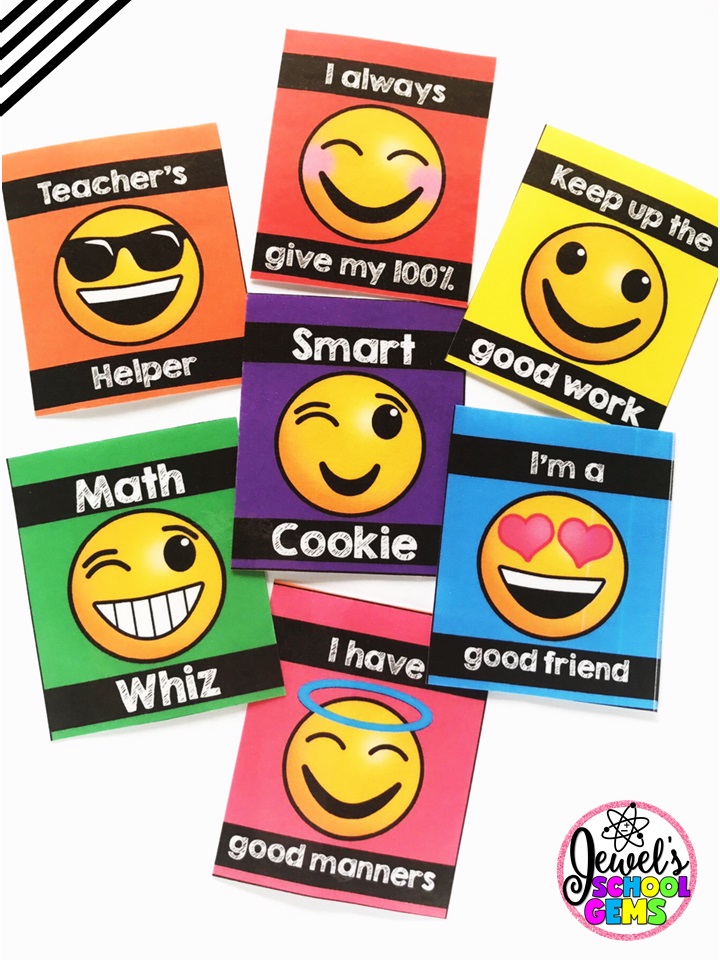
Just click on the images to see these reward tags on TpT.
Reward Tags
Reward tags are individual student incentives used to recognize appropriate behavior, encourage good choice making and foster a positive classroom atmosphere. They are inexpensive and easy to implement.
- Reward tags can be laminated, hole punched and made into necklaces. Many teachers have students hang their necklaces in a designated spot in the classroom and wear them for schoolwide events.
- Some teachers like to leave them unlaminated and write the date and comments on the back.
- Reward tags can be used for academic achievement, good behavior and/or improvement in any area.
- The variety of reward tags is limitless. You can increase the value of certain tags by making them “collectibles” that are only available on a specific day (i.e., Happy Pi Day! tag on Pi Day) or during a specific event (remember that upcoming observation? Why not have a Good Citizen Award for great behavior when visitors are present?).
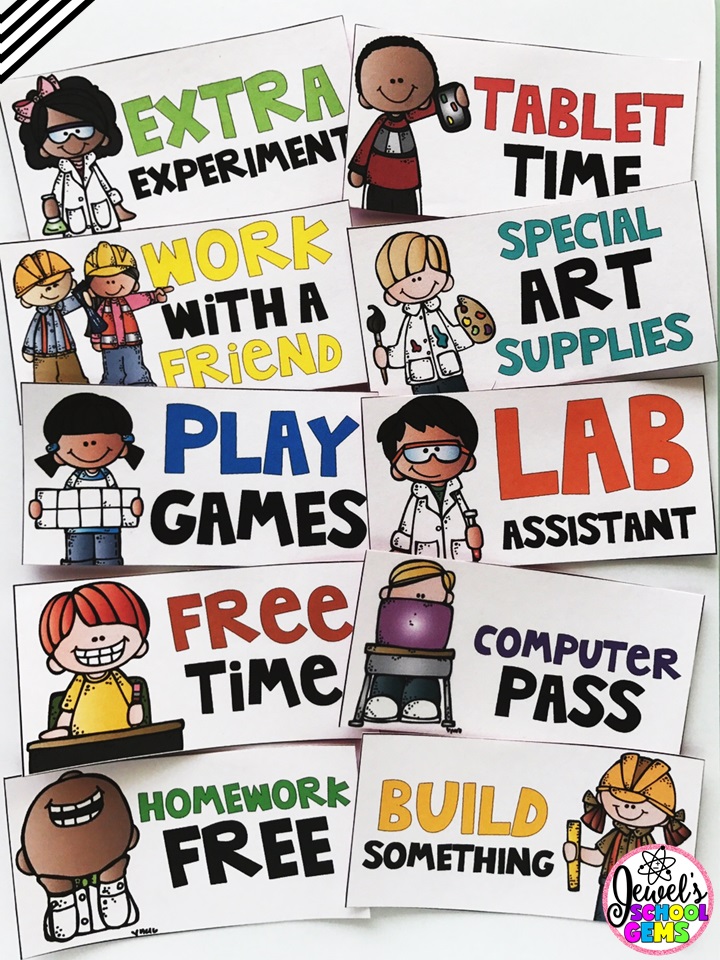
Just click on the image to see these reward coupons on TpT.
Classroom Coupons
Classroom coupons are a super powerful tool to add to your classroom management arsenal. Similar to reward tags, they can be used to recognize individual student achievement and behavior. They are also virtually cost free (excluding ink and laminating) and flexible. The main difference between reward tags and coupons is the tangible reward connected to coupons.
- Some teachers think of reward coupons as “bribery”. I prefer to look at it as incentive. As much as we would like students to be internally motivated, not all of them are. We are encouraging, motivating and enticing them to do their best by offering an incentive for when a certain skill or is demonstrated. As adults, we are offered various incentives at work all the time in the form of salary, bonuses, privileges and awards.
- Classroom coupons are so versatile. They provide you with the ability to work on whole classroom behaviors as well as individualize for specific challenging student’s behavior. You can build self-esteem and character, reward academic excellence and recognize small milestones of a struggling learner.
- Don’t be stingy with coupons. Give them frequently and allow numerous opportunities for students to redeem them.
- When first implementing a coupon system begin with approximately 15-20 coupons. Add additional coupons sporadically through the year. Holidays and special days are great times to add coupons as well.
- *** This is the most important point. This will make or break a system. You must have coupons for things the students want. Get creative. They can’t be for things you think they want, the students must actually want what you have. I can’t stress this enough. They can be a mixture of small items and privileges or just privileges alone. But they absolutely must be valued and coveted by the students. The easiest way to do this is just ask them. You can make a list on the board or have them fill out a survey.
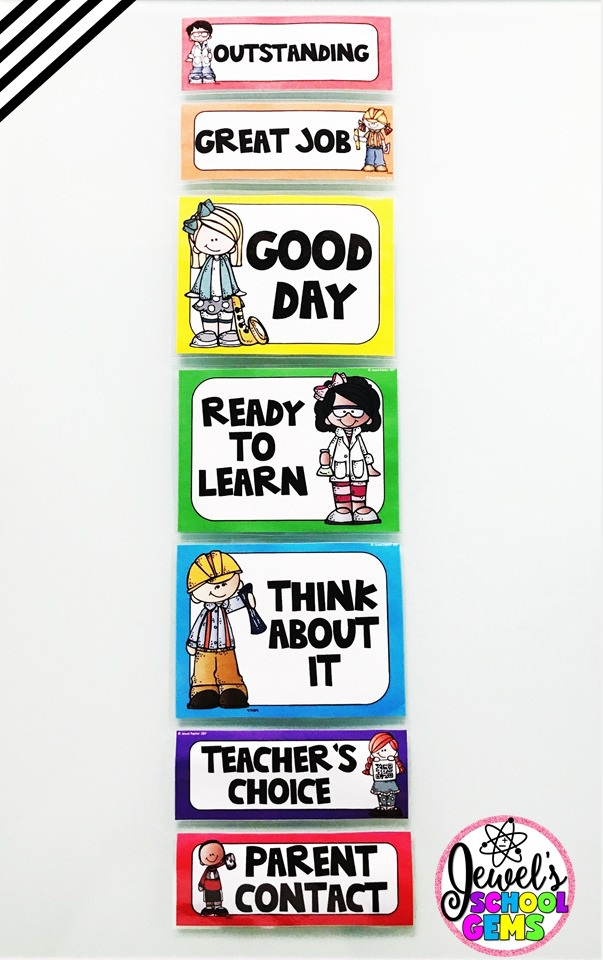
Just click on the image to see this behavior chart on TpT.
Classroom Clip Charts
Classroom clip charts had a quick rise and fall from fame. Recently many educators have turned against them and this is unfortunate because when used correctly they are extremely effective. Most clip chart systems have 5 or 6 levels. Students start the day on a neutral level such as “Ready to Learn”. As the day progresses students have opportunities to move up the chart for demonstrating positive behaviors and down levels for rule infractions. Moving a child down a level, has been interpreted by some as embarrassing to a student. Actually, I have found that quietly and calming moving a clothespin, without interrupting instruction, to be more respectful to the student and the class as a whole than a verbal reprimand would be.
- Move the clothespins yourself. Do not tell a child to “clip down” or “change color” and have them walk across the classroom in a walk of shame.
- Do not make downward card changes permanent for the day. Allow the child to redeem themselves and have an opportunity to move back up. Remember this is a fluid system.
- Make sure that any chart movement directly relates to your classroom rules. Don’t allow anger and frustration to cause you to move a student for a rule that has not been taught.
- Always keep in mind that the chart is a teaching tool and not a punishment. Students need to learn self-control and to take responsibility for their choices.
- Keep the chart focused on positive behaviors. Recognize appropriate behavior freely. When working in groups, move a whole group up for outstanding work. Move the whole class up for working quietly!
- After the clip chart system is well established, think about adding an “over the top” level that is more difficult to achieve. This level can have a privilege or award attached to it.
Each of these methods has its own benefits. They can be used alone or combined. Whichever you decide to use, make it a part of a classroom management system that focuses on the positive and makes your classroom a happy and rewarding place to be.
Want Behavior Management Resources for FREE?
It’s never too late to set clear classroom rules and use rewards in your classroom. If you want a set of FREE Whole Brain Teaching Classroom Rules and Editable STEM Reward Tags, just sign up to become a Jewel’s School Gems subscriber to access my Free Resource Library! Get these two resources plus many other Science and Math resources. Sign up today!
This post also appeared on the TpT Blog!
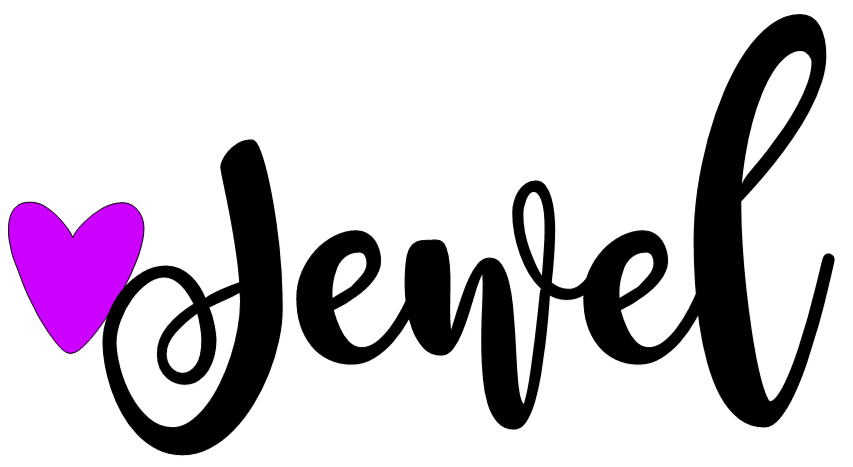
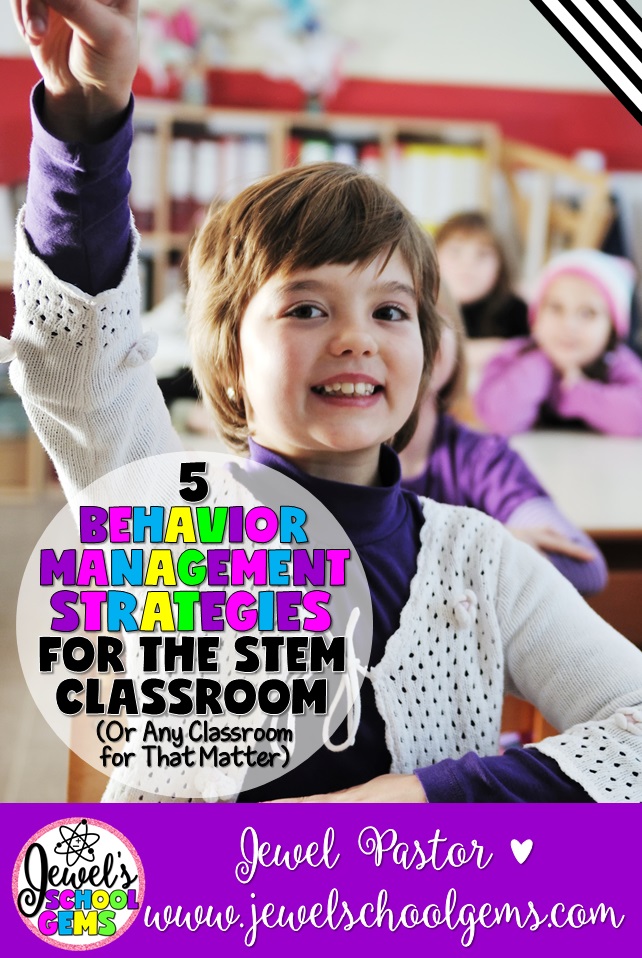
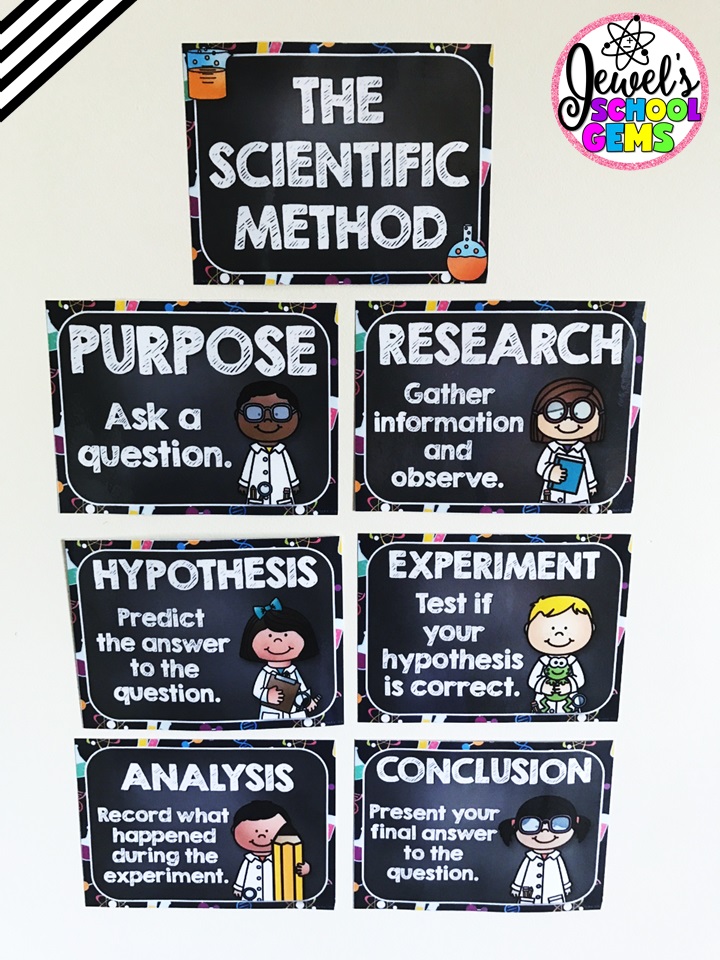
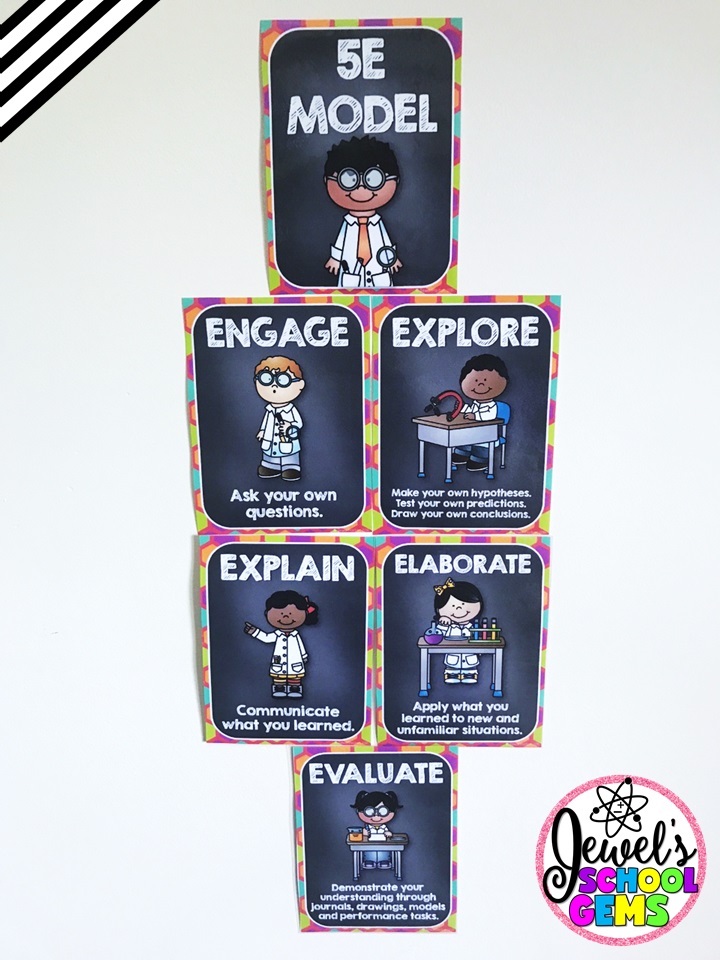
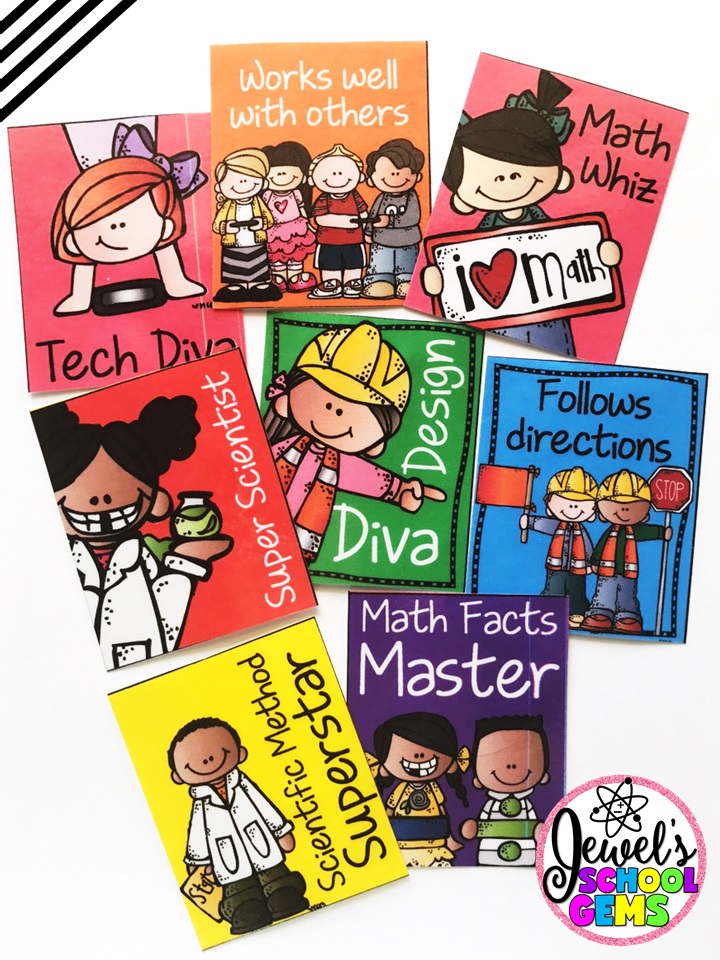
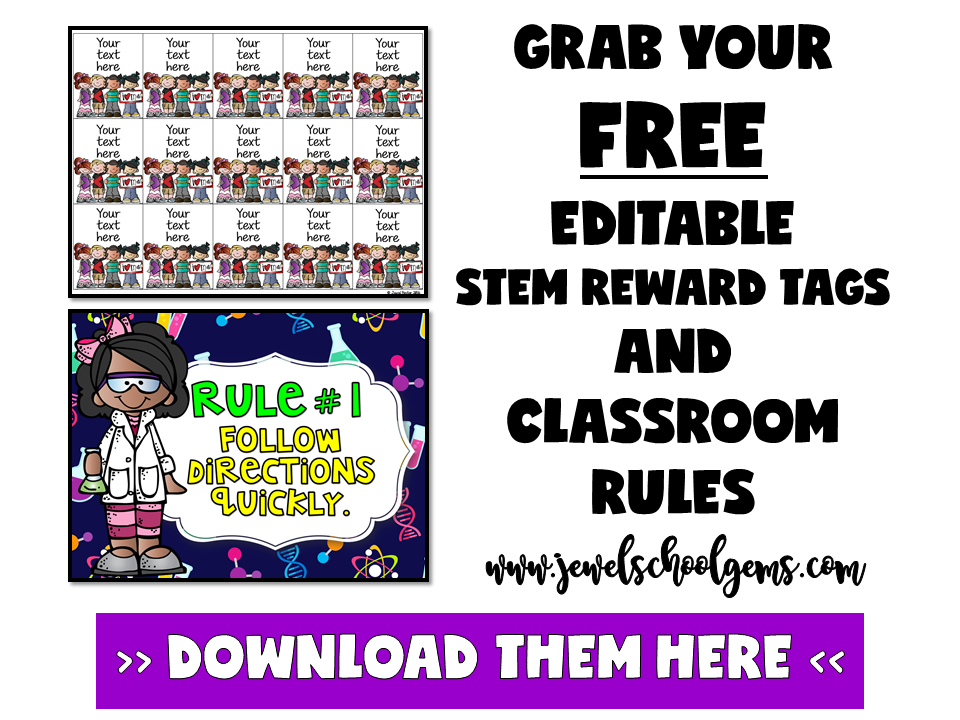

Leave a Reply
You must be logged in to post a comment.